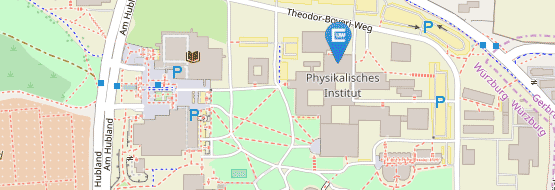A01
Symmetry and correlation in the electronic structure of epitaxial topological insulators
Summary
In this project we shall continue our research activities of the second funding period on the electronic structure of topological materials by means of advanced electron spectroscopies. As before, the major focus lies on band structure measurements by angle resolved photoemission spectroscopy (ARPES) including dichroic effects in the excitation process and spin-resolved detection at dif- ferent photon energies. The scientific goal is to understand the complex interplay of correlations, topology and magnetism — particularly in thin films and multilayer structures. Regarding the latter, recent technical developments in our group allow for a controlled combination of different materials as epitaxial multilayer systems prepared by molecular beam epitaxy (MBE) e.g. an integer number of magnetic TI layers on [Bi,Sb]2[Te,Se]3. Furthermore, we investigate specific surface and monolayer systems as promising topological candidates, as e.g. demonstrated for the Agx Te surface alloy . The key techniques for these investigations are spin- and angle- resolved photoelectron spectroscopy (SR-ARPES) utilizing a broad range of excitation energies and experimental geometries, in combination with X-ray magnetic dichroism (e.g. XMCD, XMLD) as a local probe of the magnetic properties. These methods shall be com- plemented by microscopic techniques within SFB 1170 collaborations, to obtain additional information on magnetic, structural and electronic properties. The spectroscopic data together with elaborated nu- merical approaches considering explicitly the photoemission final state extend the information to spin and orbital textures and other topologically relevant parameters.


